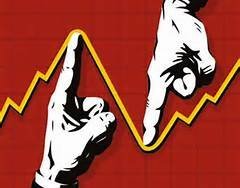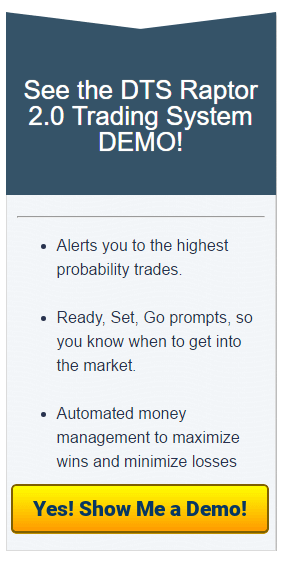Day Trading Tips and Tricks
Everything you need to know about Using a Stop Loss
 Today’s topic is one of the most important issues we deal with as traders: The Stop Loss. A stop loss is an order we place in the market after we decide where our entry should be. It essentially closes our order for a loss at a pre-determined point. Why would we ever want to close out for a loss?
Today’s topic is one of the most important issues we deal with as traders: The Stop Loss. A stop loss is an order we place in the market after we decide where our entry should be. It essentially closes our order for a loss at a pre-determined point. Why would we ever want to close out for a loss?
What makes a stop loss so important?
It Stops The Loss: I know that might seem obvious, but consider the alternative. Without having a stop, the market might just run an extreme number of ticks against you (which can happen QUICKLY sometimes) and depending on order size, deplete the account significantly OR blow it all together. Say the power goes out OR your internet connection while you have a trade open. What if you can’t get connected for hours? What happens to your trade? Knowing exactly the worst you can do leads to both better planning and more consistent results. It protects us from many “what ifs” in trading that we cannot predict. It’s like our trade insurance policy to make sure we can only lose a certain amount every time we place a trade, regardless of our connection or the market (with a few extreme exceptions).
Stop Loss Affects Win %: In my days of systems’ testing, the one thing I found consistently, is that big stops tend to raise win %, and smaller stops tend to lower it. So although it might seem attractive to always use a five tick stop to keep reward/risk ratio in your favor, the volatility found in day trading along with regular movement means that a small stop is likely to be “taken out” by the market even when it eventually goes in your favor. In fact, I have seen systems that depend on huge stops to keep their win rate above 90% (given that more time gives the market a chance to go in your favor), BUT 1 loss wipes out 15 wins. So depending on a big stop can cost a system dearly, even though it may only happen every once in awhile. So this is an area where balance must be achieved. As traders, we must be cognizant of the dynamics between giving ourselves enough room to let our trade win despite drawdown, but not sacrifice too much to make our risk/reward suffer.
 It’s a Psychological Thing: As traders, we are constantly battling our emotions and dealing with the two-headed monster of fear and greed. Using a stop loss mechanizes one aspect of risk management that is key. Of course, NONE of us want to lose ANY trade. But that just isn’t reality, and I don’t care what level of skill we are talking about. I have yet to meet ANY traders who win all the time, and I have met some VERY successful people in this business. Our stop loss takes the desire to stay in a bit longer even though we have gotten the market “wrong” (even though it may be temporary) from our entry point and trade analysis. The important thing to remember here is: 1) Set a good stop and 2) DON’T MAKE IT BIGGER. Do the analysis BEFORE the trade, and STICK to your plan! The difference much of the time in profitable traders and otherwise USING THE SAME SYSTEM is how much they can stick to their plan. Your stop is there for a reason. Deal with the loss and move on. By not making the loss bigger than your plan by moving the stop, you will give yourself a better chance of making back the money on subsequent trades.
It’s a Psychological Thing: As traders, we are constantly battling our emotions and dealing with the two-headed monster of fear and greed. Using a stop loss mechanizes one aspect of risk management that is key. Of course, NONE of us want to lose ANY trade. But that just isn’t reality, and I don’t care what level of skill we are talking about. I have yet to meet ANY traders who win all the time, and I have met some VERY successful people in this business. Our stop loss takes the desire to stay in a bit longer even though we have gotten the market “wrong” (even though it may be temporary) from our entry point and trade analysis. The important thing to remember here is: 1) Set a good stop and 2) DON’T MAKE IT BIGGER. Do the analysis BEFORE the trade, and STICK to your plan! The difference much of the time in profitable traders and otherwise USING THE SAME SYSTEM is how much they can stick to their plan. Your stop is there for a reason. Deal with the loss and move on. By not making the loss bigger than your plan by moving the stop, you will give yourself a better chance of making back the money on subsequent trades.
 So now that we see how important stops losses are in our trading, it makes sense that we should take care in HOW we apply them right? At least the “when” part is easy: USE THEM FOR EVERY TRADE, ALL THE TIME! Risk management is maybe the most important cornerstone to every successful trader. By understanding this dynamic, we both relieve pressure from having to be perfect with every entry AND protect our account from the devastation in a market that literally can do anything, at any time. We are not in the market “prediction” business; we are actually in the “risk and trade management” business. Even someone with poor analytical skills and almost random entries but strong risk management can still do MUCH better than someone with great entries but no risk management.
So now that we see how important stops losses are in our trading, it makes sense that we should take care in HOW we apply them right? At least the “when” part is easy: USE THEM FOR EVERY TRADE, ALL THE TIME! Risk management is maybe the most important cornerstone to every successful trader. By understanding this dynamic, we both relieve pressure from having to be perfect with every entry AND protect our account from the devastation in a market that literally can do anything, at any time. We are not in the market “prediction” business; we are actually in the “risk and trade management” business. Even someone with poor analytical skills and almost random entries but strong risk management can still do MUCH better than someone with great entries but no risk management.
Remember, the responsible trader is usually the rich one and risk management is an essential stepping stone of responsible trading.
Join us in our Trade Room. Click HERE to Register.




